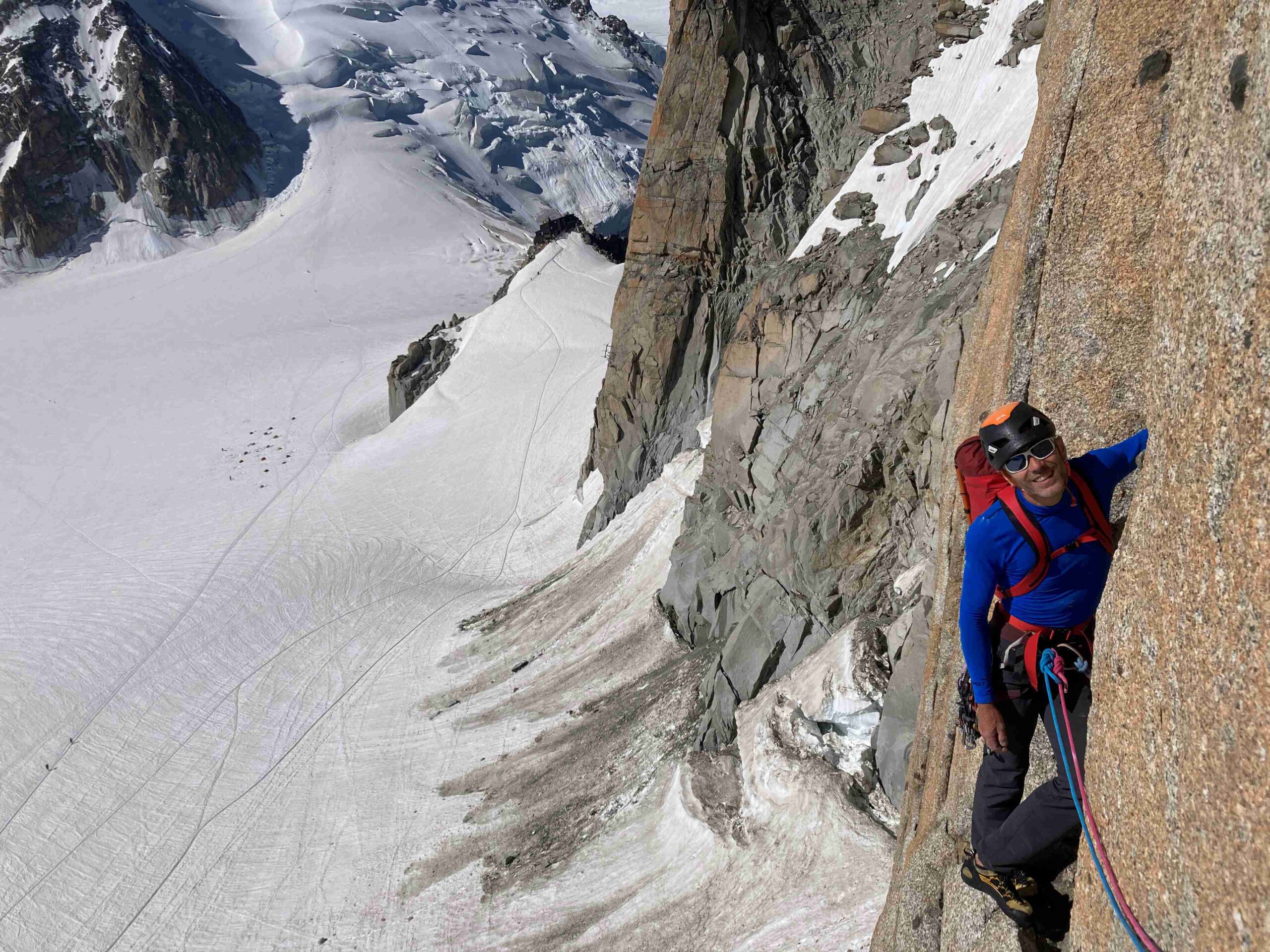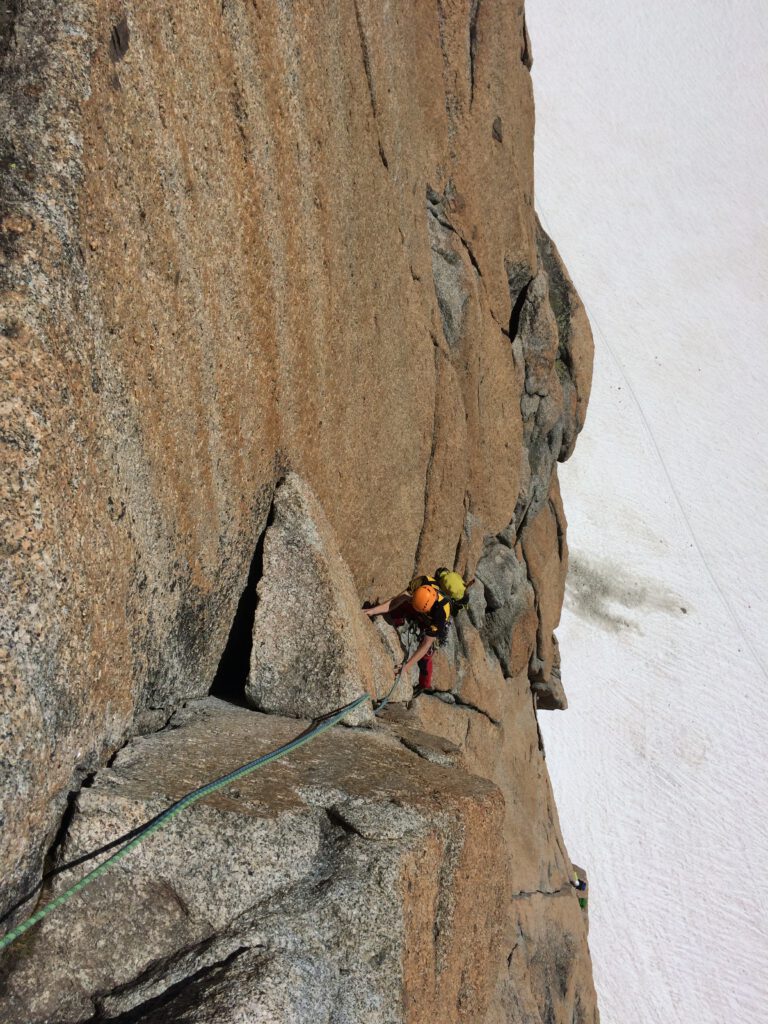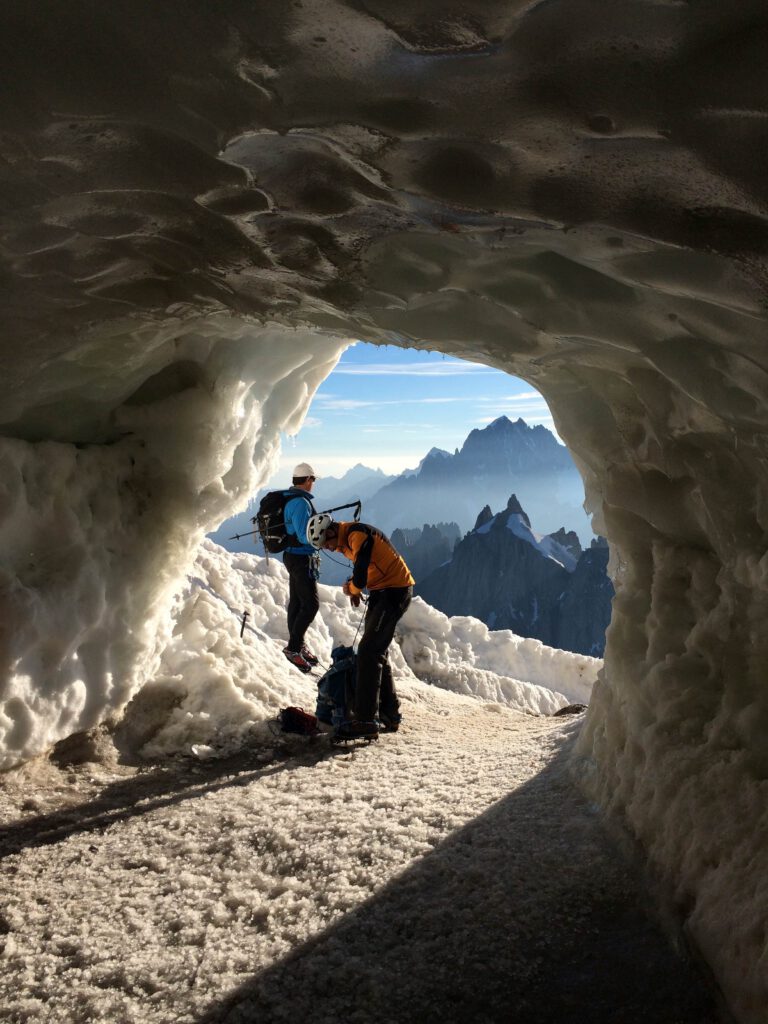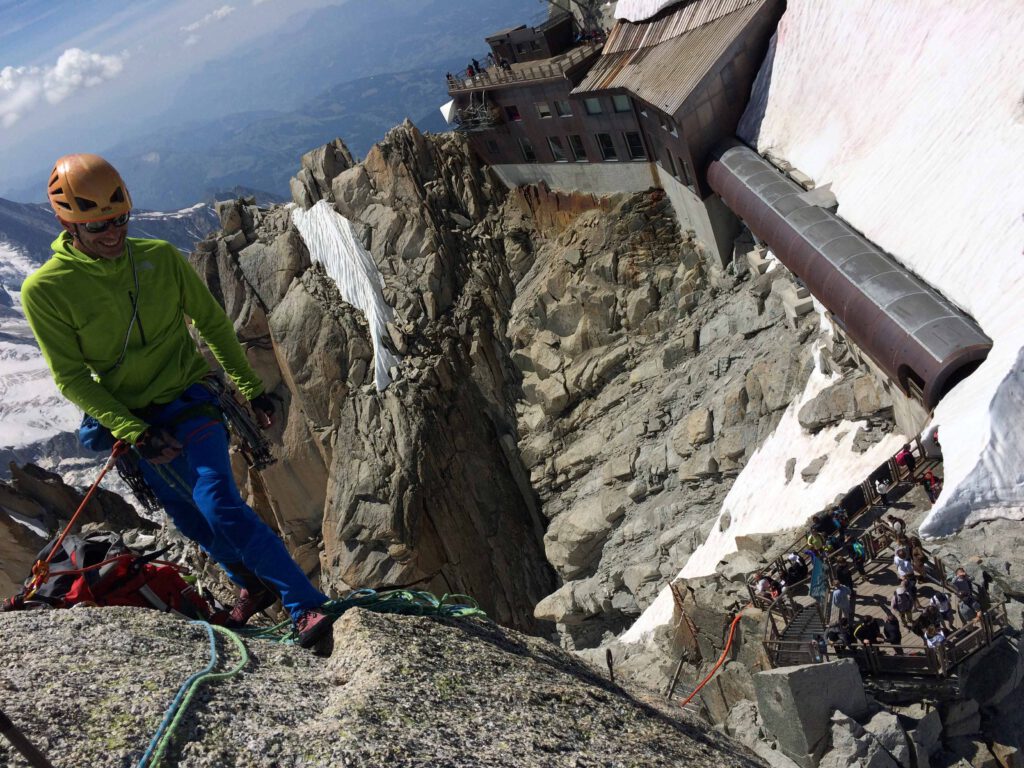Rébuffat-Baquet – Aiguille du Midi
On July 13, 1956, Gaston Rebuffat and Maurice Baquet made the first ascent of this jewel that has become one of the classics par excellence of the Montblanc massif, all thanks to its granite, the perfect cracks and its short approach, all in a domesticated but majestic environment. Don’t miss it!
DESCRIPTION
The Rebuffat-Baquet route needs no introduction. It is one of the most frequented routes in the Montblanc massif due to its well-deserved fame, and the goal of many teams from all over the world who climb this historic route every year. Depending on the day, there may be queues at the start of the route and at the anchors. If we are agile, it is better not to go up with the first cable car cabins and start a little later but with less congestion.
At a logistical level we have different options: go with light crampons and ice ax and climb with the material in the backpack. Once we reach the top we will only have to rappel to the viewing terrace. Another option is to leave the gear at the base of the wall and rappel once the route is finished. Another curious but viable option is to start the activity from the viewing terrace, climbing a short pitch equipped with bolts to reach the top, rappelling the wall through the rappels of the Contamine route, and climbing calmly without crampons or ice axes.
As it is a very busy route, it is better to bring another plans. Other recommended routes:
- Contamine. 250m 7a (6b).
- Kohlman. 250m 6c (V+/A0).
Both routes have very good rock and incredible dihedrals and cracks.
GENERAL INFORMATION
- Route: Rébuffat – Baquet – Aiguille du Midi.
- 1st Ascension: Gaston Rébuffat and Maurice Baquet, July 13, 1956.
- Grade: 6b (V+/A0).
- Equipment: some pitons and bolts in the pitches. Bolted anchors.
- Gear: rack of cams and nuts.
- Orientation: S, sun from 8am to 4pm.
APROACH
From the upper station of the Aguille du Midi cable car, go down the ridge towards the Cosmic refuge. Once located on the S side of the needle, head towards the chosen start of the route.
PITCHES DESCRIPTION
L1: IV 10m. We have two options to start the route, the first is through a gray V+ dihedral located vertically to the characteristic roof, and the second is to start a little higher, next to the beginning of the Kohlman route. This second option allows us to climb the first meters with crampons, secured by a small crack, and reach a comfortable ledge with several facilities where we will prepare comfortably.
L2: V 25m. We go out to the left to look for a perfect crack in the direction of the large roof. We will find two bolts to traverse to the left. We can go to the roof to put some frined to protect the possible pendulum of the second. We will first find an anchor of pitons and nearby another of bolts. The best option is to continue until the next one, which is further to the left and outside the vertical of the roof.
L3: 6a 20m. Very good pitch due to a characteristic fissure. We’ll find some pitons. Little friends.
L4: V 20m. We climb to the left to continue with the crack festival. Very comfortable anchor.
L5: V+ 20m. Evident pitch where the V+ passage is protected with a bolt.
L6: 6a or V. The original pitch goes to the right just after overcoming an athletic step, bordering the difficulties. If we go straight we will climb a very nice 6a.
L7: V+ or 6a. At this point many teams hesitate and finish the route using one of the different options. If we leave straight we will find a grooved fissure with some uncomfortable steps. The original route flanks the comfortable turn from the anchor and goes straight up before crossing a kind of spur, through a fissure where we will find a pair of pitons. Higher up we will find a bolt, and we will have to avoid the difficulties by continuing straight. If we continue along the fissures to the right, we will make a nice 6a that will leave us at the same meeting point where the grooved fissure arrives, located on a small ledge. From this meeting we will see some bolts on a slab just above. I recommend going down to the couloir to continue along the first or second option. We can find some snow depending on the season.
L8: V or 6a+, depending on the couloir we choose. Both options are nice, but the perfect 6a+ dihedral is so worth it. There is also the option of ending the route at the West Point, through the spectacular Cretton crack.
L9: 6b (V+/A0). We continue straight through obvious terrain, we make an athletic step through a fissure that leaves us on a terrace with an optional anchor. At this point we will find the well-equipped 6b or A0 that will leave us at the final spur.
DESCENT
If we have climbed with the glacier gear in our backpack, we will only have to do a diagonal rappel to the viewing terrace and be the attraction of the tourists. With a single 60m double rope we will have enough. If we have left boots and gear at the base of the wall, we will have to abseil the wall using one of the options available. One of them may be through the Contamine route.
TOPO
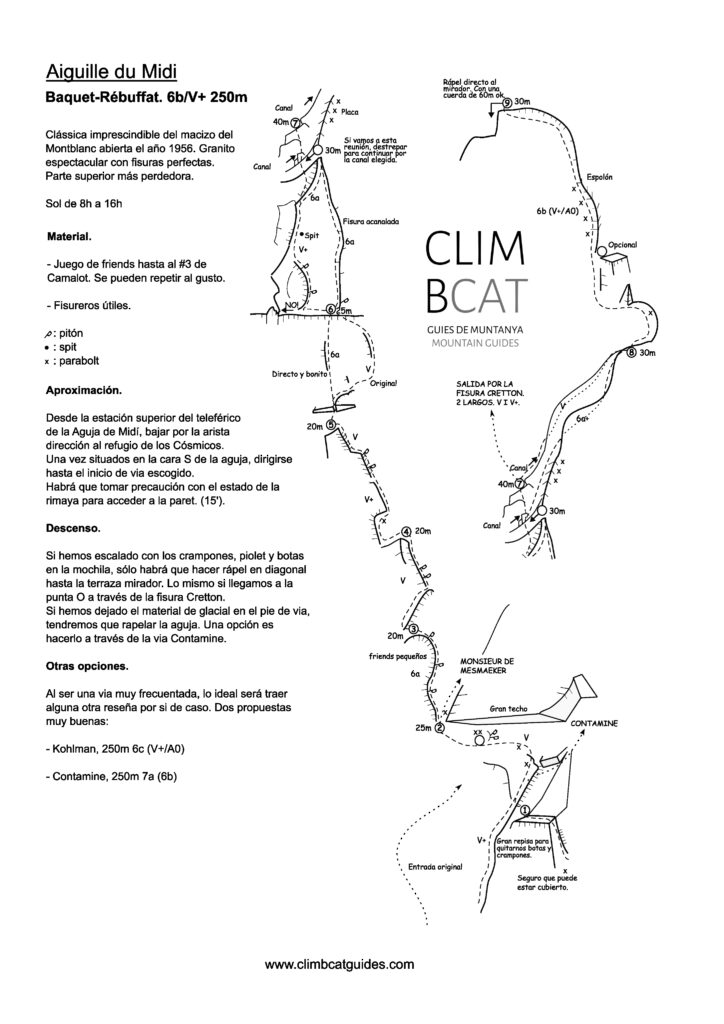
Rébuffat – Aiguille du Midi detailed topo.
PERSONAL OPINION
I have climbed this route two times with very good company, and that I have enjoyed a lot despite the traffic that we encountered. The fame is well deserved and the quality of the rock is exceptional. As a negative point, we would like to highlight the overcrowding that we can find in summer and with good weather, with some teams with a very fair level, attracted by their history, the easy approach and the pleasantness of the grades on paper.
